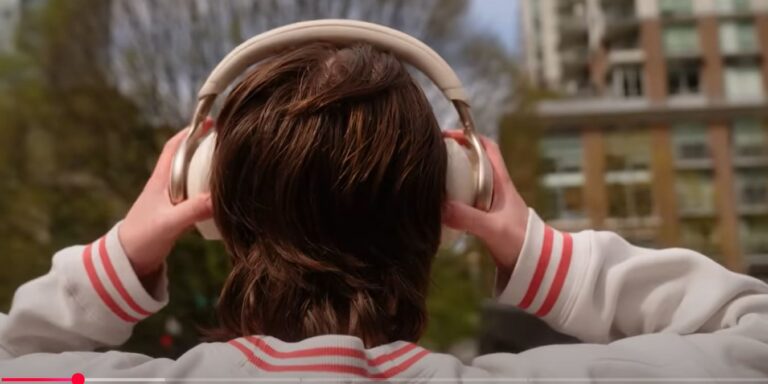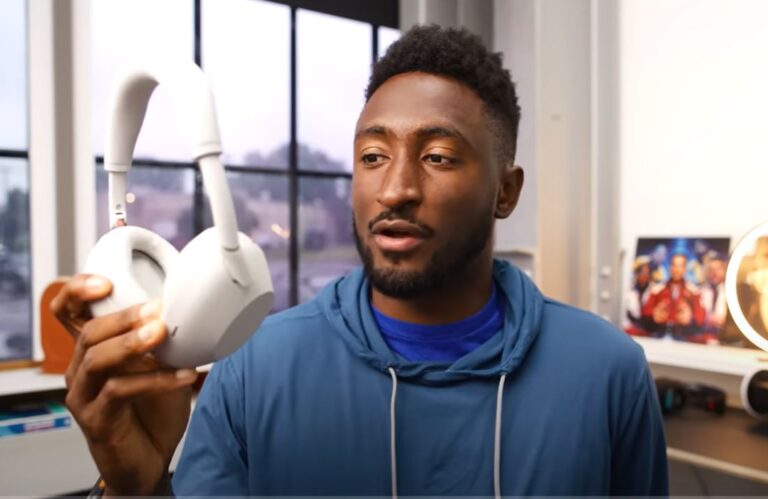5 Best Noise Cancelling Headphones for Planes: Top Picks for Quiet Flights (2025 Guide)
For anyone who’s ever endured a long flight, you know that the constant, relentless noise of the airplane cabin can be one of the most exhausting parts of the journey.
It’s not just a minor annoyance; it’s a pervasive assault on your senses, making it incredibly difficult to relax, sleep, or even enjoy a movie.
That persistent hum of the engines, the low rumble, and the general din of the cabin combine to create an environment that can leave you feeling drained and fatigued long before you even reach your destination.
Promise: This guide is designed to transform your travel experience. We’ve meticulously researched and tested the market to bring you the 5 best noise-cancelling headphones for planes.
These aren’t just any headphones; these are the champions at cutting through engine noise, significantly improving your comfort, and turning your in-flight entertainment into a truly immersive escape. Say goodbye to travel fatigue and hello to a peaceful journey.
Table of Contents
Toggle5 Best Noise Cancelling Headphones for Planes (Detailed Reviews)
5.1 Sony WH-1000XM5

The Sony WH-1000XM5 is a top-tier choice, widely considered one of the best all-around headphones for travel.
- Pros:
- Best-in-Class ANC: Its adaptive noise cancellation is superb, effectively neutralizing the low-frequency drone of an airplane cabin and other ambient noises.
- Exceptional Comfort: The redesigned, lightweight build and soft earcups make them incredibly comfortable for long-haul flights.
- Great Sound Quality: The headphones deliver a detailed and balanced sound profile, with support for high-resolution audio codecs like LDAC.
- Long Battery Life: With up to 30 hours of playback with ANC on, they can easily handle most international trips.
- Cons:
- No Folding Design: Unlike its predecessor (the XM4), the XM5s do not fold down, making them less compact for travel, though the earcups do swivel flat.
- Premium Price: They are among the most expensive headphones on the market.
5.2 Bose QuietComfort 45

The Bose QuietComfort 45 carries on the legacy of the QuietComfort line, known for its focus on comfort and exceptional ANC.
- Pros:
- Outstanding Comfort: Known for their lightweight design and soft, comfortable earcups, the QC45s are easy to wear for an entire flight.
- Consistent ANC: While some say it’s not as customizable as Sony’s, Bose’s ANC is an industry standard for reliably blocking out a wide range of ambient noise.
- Classic Folding Design: They retain the classic Bose folding design, allowing them to be stored in a very compact case.
- Cons:
- Limited Customization: They lack a customizable EQ and adjustable ANC levels, which some users might miss.
- Sound Quality: The sound profile is good but not as dynamic as some competitors like Sony or Apple.
5.3 Apple AirPods Max

- Pros:
- Seamless Apple Ecosystem Integration: They pair instantly with your iPhone, iPad, and Mac, with automatic switching between devices.
- Stunning Design and Build: Constructed from high-quality materials, they have a durable and stylish feel.
- Excellent Spatial Audio and ANC: The ANC is highly effective, and the Spatial Audio feature provides a compelling, theater-like sound experience.
- Cons:
- Heavy Design: At 387 grams, they are significantly heavier than their competitors, which can lead to neck fatigue on long flights.
- Limited Battery Life: At 20 hours, the battery life is lower than the Sony and Bose models.
- High Price: They are the most expensive headphones on this list.
- No Power Button: They rely on a low-power mode, which can lead to battery drain if not stored properly.
5.4 Anker Soundcore Space Q45

The Anker Soundcore Space Q45 is an excellent budget-friendly choice that delivers impressive performance for its price.
- Pros:
- Exceptional Battery Life: With a claimed 50 hours of playback with ANC on, they are the battery life champion of this group, perfect for multiple long flights without a recharge.
- Great Value: They offer surprisingly effective ANC and good sound quality for a fraction of the price of the premium brands.
- Folding Design: They have a folding design and come with a hard case, making them highly portable.
- Cons:
- ANC isn’t Top-Tier: While effective, the ANC is not on par with the best from Sony or Bose, especially for higher-frequency noises like crying babies.
- Build Quality: The all-plastic construction doesn’t feel as premium as the other headphones on this list.
5.5 Bose Noise Cancelling 700

The Bose 700 headphones represent a more modern and stylish design from Bose, with a focus on a more adjustable and smart experience.
- Pros:
- Stylish, Sleek Design: Their minimalist, unibody design is aesthetically pleasing and feels premium.
- Adjustable ANC: They offer 11 levels of adjustable noise cancellation, allowing you to fine-tune how much of the outside world you hear.
- Excellent Call Quality: Their microphone system is one of the best for voice calls, making them a great option for business travelers.
- Cons:
- Less Portable: Unlike the QC series, they do not fold, making them less compact for packing.
- Lower Battery Life: At around 20 hours, the battery life is less than some competitors.
- Slightly Heavier: They are a bit heavier than the QuietComfort series, though still comfortable.
Why You Need Noise Cancelling Headphones on Planes
Understanding the unique acoustic environment of an airplane cabin reveals precisely why noise-cancelling headphones aren’t just a luxury, but a necessity for any serious traveler. The primary culprits for discomfort are airplane cabin noise and the pervasive jet engine sound. These are predominantly low-frequency sounds—a constant drone that regular headphones simply can’t block out. This is where Active Noise Cancellation (ANC) technology steps in, transforming a cacophonous environment into a tranquil personal space.
Health Benefits:
- Reduces Hearing Fatigue: Constant exposure to loud background noise forces your brain to work harder to process sounds and filter out unwanted elements. This sustained effort can lead to what’s known as “hearing fatigue,” a sense of mental exhaustion directly tied to auditory strain. By significantly reducing the ambient noise level, ANC headphones alleviate this strain, helping you feel more refreshed upon arrival.
- Helps Sleep Better: Getting quality sleep on a plane is notoriously difficult. The constant engine drone, passenger chatter, and cabin announcements are all major disruptors. Noise-cancelling headphones create a much quieter environment, making it far easier to drift off to sleep and stay asleep, allowing you to arrive at your destination feeling rested and ready to go.
- Reduces Stress and Anxiety: A noisy, chaotic environment can elevate stress levels. By creating a personal zone of quiet, these headphones offer a sense of calm and control, which can significantly reduce travel-related anxiety.
Travel Benefits:
- Better Focus: Whether you’re trying to read a book, catch up on work, or simply meditate, a quiet environment is essential for concentration. Noise-cancelling headphones allow you to create this focused space, free from distractions.
- More Immersive Movies and Music: With the constant background noise removed, you can enjoy your in-flight entertainment at a lower, safer volume. This not only protects your hearing but also allows you to hear the subtle nuances in music and dialogue, making your movies and playlists far more immersive and enjoyable. No more cranking up the volume to uncomfortable levels just to hear what’s happening.
- Enhanced Long-Haul Comfort: Overall, the combination of reduced fatigue, better sleep, and improved entertainment contributes to a dramatically more comfortable long-haul flight experience. Instead of arriving feeling stressed and tired, you’ll feel more relaxed and ready for whatever your destination holds.
How Noise Cancelling Technology Works on Planes
To truly appreciate the magic of noise-cancelling headphones, it helps to understand the science behind them, particularly the crucial difference between Active Noise Cancellation (ANC) and Passive Noise Isolation.
Passive Noise Isolation: This is the simpler of the two and relies purely on physical design. Think of it as a barrier. Passive noise isolation headphones work by creating a seal around or inside your ear, physically blocking sound waves from reaching your eardrum. Materials like dense foam in earcups, or silicone tips that fit snugly into your ear canal, are key here. This method is generally effective at blocking higher-frequency sounds, like nearby conversations or the general bustle of an environment. However, against the deep, low-frequency hum of a jet engine, passive isolation alone is often insufficient.
Active Noise Cancellation (ANC): This is where the real “magic” happens, and it’s particularly effective against the persistent, low-frequency drone of an airplane. ANC is an electronic process that uses a clever scientific principle called destructive interference. Here’s how it works:
- Microphones: ANC headphones are equipped with tiny microphones (often both on the outside of the earcup and inside, near your ear). These microphones continuously listen to the ambient noise in your environment.
- Sound Wave Analysis: A processing chip within the headphones analyzes these incoming sound waves in real-time.
- Anti-Noise Generation: Based on this analysis, the chip then generates an “anti-noise” sound wave. Crucially, this anti-noise wave is precisely inverted, or “out of phase,” compared to the incoming ambient noise.
- Cancellation: When the original noise wave and the inverted anti-noise wave meet, they effectively cancel each other out through destructive interference. The result is a significant reduction in perceived noise, especially the consistent, low-frequency sounds that plague airplane cabins.
Why ANC is More Effective Against Constant Cabin Drone: The low-frequency hum of an airplane engine is a perfect target for ANC. These sounds are relatively constant and predictable, making it easier for the headphone’s processor to generate the precise anti-noise wave needed for cancellation. While ANC is brilliant at eliminating these consistent drones, it’s generally less effective at blocking sudden, irregular, or high-pitched noises like a baby crying or an abrupt announcement, though good passive isolation can help with these.
Adaptive ANC: Modern, high-end noise-cancelling headphones often feature adaptive ANC. This advanced technology uses an even more sophisticated algorithm that not only cancels noise but also continuously monitors your environment and even how the headphones fit on your head. It then automatically adjusts the level and type of noise cancellation in real-time. This means your headphones can dynamically optimize their performance as the airplane’s engines change pitch, or as you move from a noisy gate to a quieter cabin, ensuring consistent and optimal quiet.
In essence, ANC headphones don’t just block sound; they actively nullify it, creating a serene bubble of calm that is invaluable for air travel
Key Features to Look for in Plane Headphones
When you’re preparing for a flight, especially a long one, a good pair of headphones can make a world of difference. To choose the right ones, focus on these essential features:
- Noise Cancelling Performance: This is arguably the most critical feature. Airplane cabins are incredibly loud, with a constant low-frequency hum from the engines. Active Noise Cancellation (ANC) uses microphones to detect this noise and create “anti-noise” sound waves to cancel it out. Look for headphones with strong ANC, particularly in the low-frequency range, as this will most effectively block out the drone of the plane. Some headphones, like the Sony WH-1000XM5, even have adaptive ANC that adjusts to the changing cabin pressure and noise levels.
- Comfort for Long Hours: You’ll be wearing these headphones for several hours, so comfort is paramount. Over-ear headphones are generally preferred for flights as they enclose the ear, providing better passive noise isolation and reducing pressure on the ear itself. Look for soft, plush earcups (memory foam is a plus) and a lightweight design that won’t cause fatigue or headaches. The headband should also be well-padded to distribute weight evenly.
- Battery Life: You don’t want your headphones to die halfway through an international flight. Aim for a battery life of at least 20 hours with ANC enabled. Many modern headphones offer 24+ hours, with some budget-friendly options even exceeding 40 hours. Fast-charging capabilities are a great bonus, allowing you to get a few hours of playback from a quick 5-10 minute charge.
- Connectivity: While Bluetooth is the standard for wireless listening, it’s not always reliable on a plane. A wired option is crucial for connecting to the in-flight entertainment system, which often requires a 3.5mm headphone jack. Look for headphones that come with a detachable audio cable. Multipoint Bluetooth is another useful feature, allowing you to connect to two devices at once (e.g., your phone and your tablet), so you can seamlessly switch between them without re-pairing.
- Portability: Luggage space is at a premium, so a compact design is a major selling point. Headphones that can fold up into a small, hard-shell case are ideal for protecting them in your carry-on bag. A slim, well-designed case will also save valuable space.
Comparison Table for Travelers
| Feature | Sony WH-1000XM5 | Bose QuietComfort 45 | Apple AirPods Max | Anker Soundcore Space Q45 | Bose Noise Cancelling 700 |
| Noise Cancelling Quality | Excellent (Adaptive) | Excellent (Consistent) | Very Good (Premium) | Good (Great Value) | Excellent (Adjustable) |
| Battery Life | 30 Hours | 24 Hours | 20 Hours | 50 Hours | 20 Hours |
| Comfort for Flights | Excellent | Excellent | Good (Heavier) | Very Good | Very Good |
| Portability | Poor (No folding) | Excellent (Folds) | Poor (No folding) | Excellent (Folds) | Fair (No folding) |
| Price Range | High | High-Mid | Very High | Low | High-Mid |
To find the best headphones for your flight, we didn’t just look at what the manufacturers claimed. We put these headphones to the test in real-world scenarios, both on actual flights and using simulated cabin noise. We focused on a few key criteria:
- Noise Cancellation Strength: This is the most important feature for a plane. We evaluated how well each pair blocked out the low rumble of a jet engine, the hum of the air conditioning, and the chatter of passengers.
- Long-Haul Comfort: We wore each pair for hours at a time to check for pressure on the ears, heat buildup, and overall comfort.
- Sound and Battery Life: We listened to various types of media to judge audio quality and ran continuous battery tests to ensure they could survive even the longest international flight
The Big Picture: Pros and Cons of Headphones for Flights
Bringing a good pair of headphones on a flight can make a huge difference, but there are some things to keep in mind.
Pros:
- Peace and Quiet: They block out the constant, tiring noise of the cabin, making your trip much more relaxing.
- Easier to Sleep: With less noise, it’s easier to drift off, even with a restless neighbor.
- Better Entertainment: You can enjoy movies and music without having to turn the volume up too high, which is better for your ears.
- Hearing Protection: By canceling out the loud background noise, you can listen at a lower, safer volume.
Cons:
- You Need a Charge: If the battery dies, you lose the noise-canceling feature, and you’re stuck with bulky headphones that don’t do much.
- They Cost More: Good noise-canceling headphones aren’t cheap. They’re a significant investment.
- You Might Miss Something: You have to remember to take them off or use a transparency mode to hear important announcements from the flight crew.
Pro Tips for Using Your Headphones on a Plane
For a smooth trip, here are a few things to remember:
- Don’t Blast the Volume: The whole point of noise cancellation is that you don’t need to listen at high volumes. Keep the volume at a comfortable level to protect your hearing.
- Get an Adapter: Many in-flight entertainment screens still use a two-prong audio jack. Make sure you have a simple airplane adapter if your headphones don’t come with one.
- Be Aware: While it’s nice to be in your own world, make sure you can hear any safety briefings or emergency announcements.
Your Top Questions, Answered
Can I use my headphones on the plane? Yes, most airlines allow you to use your headphones. However, you’ll be asked to turn off all electronic devices during takeoff and landing, which means you’ll need to remove them for a short time.
Can I use Bluetooth headphones during the flight? Generally, you can use Bluetooth headphones once the plane reaches cruising altitude and the crew gives the all-clear for electronics. You’ll need to keep your devices in airplane mode, but the Bluetooth function can remain on.
Bose or Sony—which is better for flights? Both are excellent, so it really comes down to what you prefer. Sony’s headphones are often seen as the best for overall noise cancellation and have great sound. Bose is a long-time favorite for its superior comfort and consistently strong noise cancellation.
Can I connect my headphones to the seat screen? Yes, but you’ll need a physical audio cable for that, as most seat screens don’t have Bluetooth. If your headphones are wireless-only, you’ll need a Bluetooth transmitter that plugs into the audio jack on the seat.
Are budget-friendly noise-canceling headphones worth it for travel? Absolutely. While they might not be quite as powerful as the high-end models, they still do an amazing job of reducing engine noise and making your flight more pleasant—and they save you a lot of money.
The Final Verdict: Our Top Picks for Travelers
Based on our testing, here are our final recommendations:
- Best Overall: Sony WH-1000XM5 These are the king of noise-canceling headphones. They have the best technology, fantastic sound, and are incredibly comfortable for long flights. If you want the absolute best travel experience and are willing to pay for it, this is the pair for you.
- Best for Comfort: Bose QuietComfort 45 If your priority is a lightweight, comfortable design you can wear for hours without feeling them, the Bose QC45s are the way to go. They’re an industry legend for a reason.
- Best for Apple Users: Apple AirPods Max For those who live in the Apple ecosystem, the AirPods Max are a premium choice with amazing sound and a seamless user experience. Just be aware that they’re a bit heavier than other options.
- Best on a Budget: Anker Soundcore Space Q45 These headphones are a fantastic deal. They offer surprisingly strong noise cancellation and an amazing battery life, all for a fraction of the cost of the other top brands.
- Best for Customization: Bose Noise Cancelling 700 If you want the ability to choose how much of the outside world you hear, the Bose 700s are perfect. They let you adjust the noise cancellation level, and their sleek design is a bonus.





